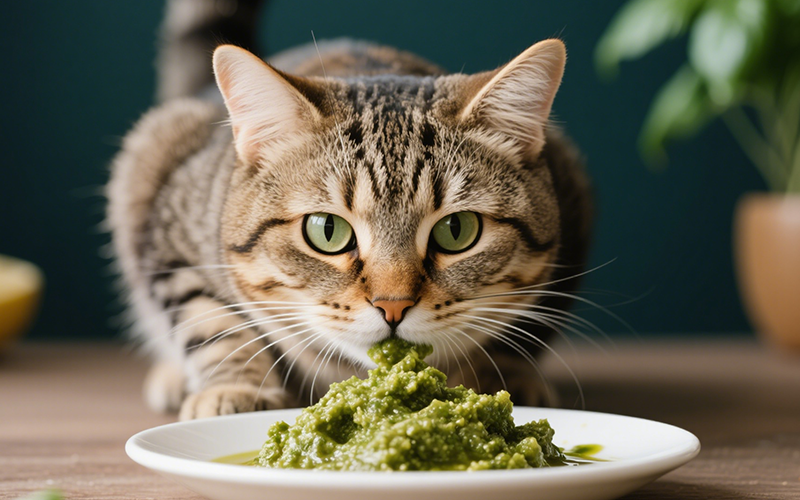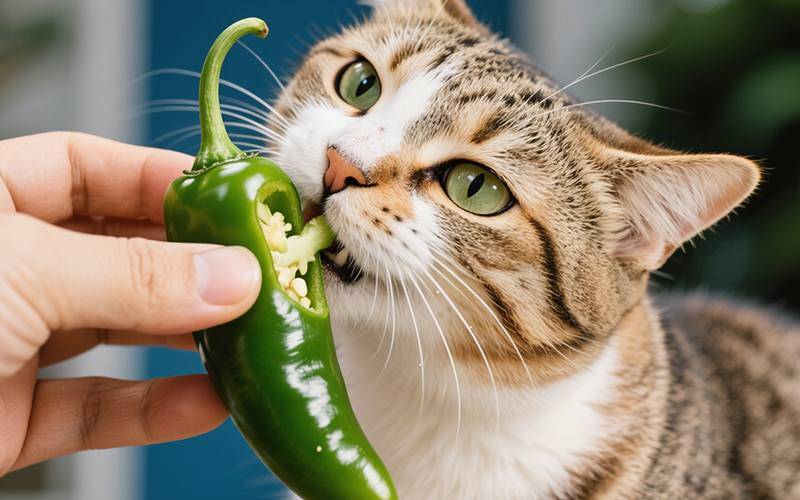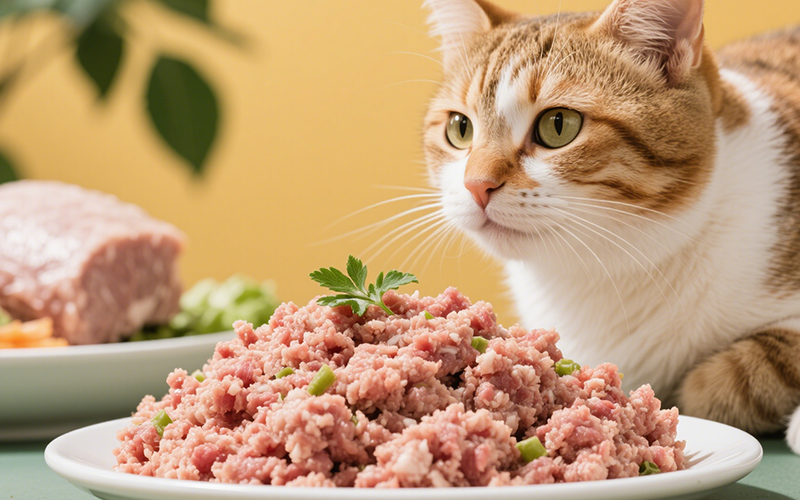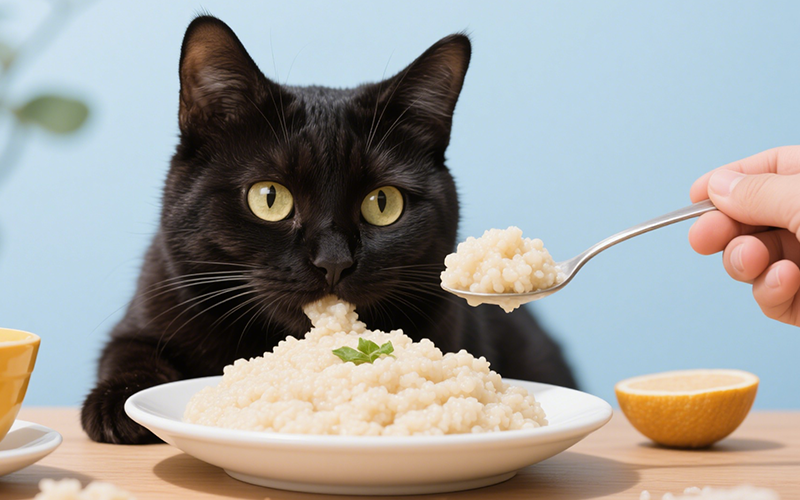Pesto & Paws: A Dangerous Mix? Can Cats Eat Pesto Safely?
- 24 Apr 2025 09:21
Pesto, that vibrant green, intensely flavorful sauce originating from Genoa, Italy, is a culinary delight for many humans. Traditionally made with basil, pine nuts, garlic, Parmesan cheese, and olive oil, it adds a zesty punch to pasta, sandwiches, and more. As pet owners, we're often tempted to share our favorite foods, especially when our feline friends show curiosity. This leads to the critical question: can cats eat pesto? While it might seem like a harmless dollop of savory goodness, pesto contains several ingredients that are unhealthy and, most alarmingly, potentially toxic to cats. This comprehensive guide, reviewed for veterinary accuracy and adhering to EEAT principles, will break down the risks hidden within this popular sauce and explain why it should be kept far away from your cat's food bowl.

Deconstructing Pesto: What's Typically Inside?
To understand the risks, let's look at the classic ingredients found in traditional pesto Genovese:
Fresh Basil: The primary herbal component, giving pesto its characteristic green color and fresh aroma.
Garlic: A key flavoring agent, providing a pungent kick. **This is a major red flag for cats.**
Pine Nuts: Added for creamy texture and nutty flavor.
Parmesan Cheese (or other hard cheese like Pecorino Sardo):** Contributes saltiness, umami flavor, and richness.
Olive Oil (Usually Extra Virgin):** Used to emulsify the sauce, adding richness and flavor.
Salt: Added for seasoning.
It's also important to note that variations exist. Some recipes might substitute walnuts or other nuts for pine nuts, use different herbs like parsley or arugula, add lemon juice, or even include ingredients like sun-dried tomatoes or peppers. Store-bought pesto often contains additional preservatives, stabilizers, and sometimes hidden sugars or other flavor enhancers. Regardless of the specific recipe, several core ingredients consistently pose risks to cats.
The Verdict Upfront: Is Pesto Safe for Cats?
The clear consensus among veterinarians and pet safety experts is **NO, pesto is not safe for cats.** While a minuscule lick might not cause immediate disaster in every single instance (depending heavily on the specific ingredients and the cat's sensitivity), the potential for serious harm is significant due to multiple problematic components. Feeding pesto intentionally is strongly discouraged. Cats are **obligate carnivores**. Their digestive systems and metabolic pathways are specifically adapted to process nutrients from animal tissues. Their tolerance for many plant-based ingredients, especially pungent ones like garlic or those high in fat and salt, is low. Introducing a complex, rich sauce like pesto can easily overwhelm their system and expose them to dangerous toxins.
Danger Zone: Why Pesto Ingredients Are Harmful to Cats
Let's break down the specific ingredients and their associated risks for felines:
1. Garlic: The Primary Toxin
This is the most dangerous component of traditional pesto for cats. Garlic belongs to the *Allium* genus (along with onions, chives, leeks, and shallots).
Mechanism of Toxicity: Alliums contain organosulfides (like N-propyl disulfide) which cause oxidative damage to feline red blood cells. This damage leads to the formation of Heinz bodies and ultimately causes the red blood cells to rupture (hemolytic anemia). Cats are considered even more susceptible to *Allium* toxicity than dogs.
Symptoms of Garlic Toxicity: Importantly, symptoms may not appear for several days after ingestion, making it difficult for owners to connect the cause and effect. Signs include:
Lethargy and weakness
Pale gums (indicating anemia)
Rapid breathing (tachypnea) or panting
Increased heart rate (tachycardia)
Vomiting and diarrhea
Reduced appetite
Jaundice (yellowing of skin/gums in severe cases)
Dark red or brown urine
Collapse
Severity:** Even small amounts of garlic, especially concentrated forms like garlic powder (though fresh garlic is used in pesto), can be enough to cause toxicity in cats. There is no safe dose of garlic established for cats. Its presence alone makes pesto unsuitable and dangerous. The answer to "can cats eat pesto?" is largely determined by this single, toxic ingredient.
2. Onion (Sometimes Present): Also Toxic
While not always in traditional pesto, some variations or store-bought versions might include onion or onion powder for extra flavor. Onions share the same toxic mechanism as garlic (Allium toxicity) and should also be strictly avoided.
3. High Fat Content (Olive Oil, Pine Nuts, Cheese): Pancreatitis Risk
Pesto is typically very rich due to the generous amounts of olive oil, nuts, and cheese. While cats need fat in their diet, excessive amounts, especially consumed suddenly, can overwhelm their system.
Pancreatitis Trigger:** A sudden high-fat meal is a known risk factor for triggering **pancreatitis** in cats (and dogs). This is a painful and potentially life-threatening inflammation of the pancreas.
Symptoms of Pancreatitis:** This often requires emergency veterinary care and hospitalization. Signs include:
Loss of appetite (often severe)
Lethargy and hiding
Vomiting
Diarrhea
Abdominal pain (cat may hunch over or react negatively to being picked up)
Dehydration
Fever or low body temperature (hypothermia)
Other Fat-Related Issues:** High fat intake also contributes excess calories, leading to weight gain and obesity over time, which increases the risk of diabetes, arthritis, and other health problems.
4. High Sodium (Salt, Parmesan Cheese): Salt Toxicity Risk
Both added salt and the significant amount of sodium naturally present in hard cheeses like Parmesan contribute to pesto's high salt content.
Why Salt is Bad:** While essential in small amounts, excessive sodium intake is dangerous for cats. It can lead to:
Increased thirst and urination
Dehydration
Vomiting and diarrhea
Electrolyte imbalances
Increased blood pressure (especially concerning for cats with heart or kidney disease)
Sodium Ion Poisoning (Hypernatremia):** In severe cases, this can cause neurological signs like tremors, seizures, disorientation, coma, and can be fatal.
5. Dairy (Parmesan Cheese): Lactose Intolerance
While Parmesan is a hard, aged cheese with lower lactose levels than softer cheeses or milk, it still contains some.
Feline Lactose Intolerance:** Most adult cats lack sufficient amounts of lactase, the enzyme needed to digest lactose (milk sugar).
Symptoms:** Ingesting dairy, even lower-lactose cheese in significant amounts, can cause digestive upset in sensitive cats, including diarrhea, gas, and bloating.
6. Pine Nuts (and Other Nuts): Allergies, Fat & Choking
While pine nuts aren't considered directly toxic like garlic, they still pose issues:
High Fat:** Contribute further to the overall high fat content (pancreatitis/obesity risk).
Allergies:** Nuts can be potential allergens for some cats, causing skin reactions or digestive upset.
Choking Hazard:** Whole nuts or large pieces could potentially pose a choking risk, although less likely once blended into pesto.
Other Nuts:** If pesto is made with walnuts (higher risk of mold toxins if not fresh) or macadamia nuts (known to be toxic to dogs, safety in cats less clear but best avoided), the risks increase.
7. Basil & Olive Oil: Relatively Safer but Still Considerations
Basil:** Generally considered safe for cats in very small quantities. Large amounts could potentially cause mild digestive upset, but it's the least concerning ingredient in pesto.
Olive Oil:** Non-toxic but contributes significantly to the high fat content. Small licks are unlikely harmful, but the amount in pesto adds considerable fat and calories.
What About Different Types of Pesto? (e.g., Red Pesto)
Variations like red pesto (often containing sun-dried tomatoes, almonds, and potentially peppers alongside some traditional ingredients) are also generally unsafe. They frequently still contain: * **Garlic:** Remains a common ingredient. * **High Fat:** From oil, nuts (like almonds), and possibly cheese. * **High Salt:** From cheese, sun-dried tomatoes (often packed in salt/oil), and added seasoning. * **Other Problematic Ingredients:** Depending on the recipe, they might include onions or other unsuitable items. **The bottom line:** Assume any pesto, traditional or otherwise, contains ingredients harmful to cats unless proven otherwise by meticulous label reading (and even then, the high fat/salt content makes it unsuitable).
Help! My Cat Licked Some Pesto! What Should I Do?
If your cat manages to sneak a taste of pesto, swift action is recommended due to the garlic risk: 1. **Prevent Further Access:** Immediately remove the pesto dish or container. Clean up any spills thoroughly. 2. **Estimate the Amount:** How much did they lick? A tiny smear or a more significant amount? 3. **Try to Identify Ingredients (If Possible):** Was it homemade or store-bought? Do you know if it definitely contained garlic or onion? 4. **Contact Your Veterinarian or Emergency Pet Clinic IMMEDIATELY:** Due to the high risk of garlic toxicity (which can have delayed symptoms), it's crucial to seek veterinary advice right away, even if your cat seems fine. * Inform them clearly: "My cat ingested pesto, and I'm concerned about garlic toxicity." * Provide details: Estimated amount, time of ingestion, known ingredients, your cat's weight/breed/age. 5. **Follow Veterinary Guidance:** Your vet will assess the risk based on the information. They might recommend: * Monitoring at home (for a minuscule lick with low suspected garlic content, though this is risky). * Bringing the cat in for examination and potential decontamination (inducing vomiting safely *if* ingestion was very recent and deemed appropriate by the vet). * Blood tests (baseline red blood cell count and potentially monitoring over the next few days). * Supportive care if symptoms develop. 6. **Do NOT Induce Vomiting at Home:** This can be dangerous and should only be performed by a veterinary professional. 7. **Monitor Closely:** If monitoring at home is advised (less likely scenario), watch diligently for *any* signs of illness over the next **several days** (lethargy, pale gums, vomiting, diarrhea, breathing changes). Report any changes to your vet immediately.
Pesto Safety for Cats: Risk Summary Table
This table summarizes the key risks associated with pesto ingredients for cats:
| Pesto Ingredient | Risk Level / Concern for Cats | Primary Dangers & Recommendation |
| Garlic (and Onion) | HIGHLY TOXIC / DANGEROUS | Causes hemolytic anemia (red blood cell damage). Potentially life-threatening. **AVOID COMPLETELY.** Seek immediate vet care if ingested. |
| High Fat (Oil, Nuts, Cheese) | High Risk / Unhealthy | Risk of pancreatitis, contributes to obesity, G.I. upset. Avoid. |
| High Sodium (Salt, Cheese) | High Risk / Unhealthy | Risk of dehydration, sodium poisoning, worsens heart/kidney issues. Avoid. |
| Dairy (Parmesan Cheese) | Moderate Risk / Unsuitable | Potential for digestive upset due to lactose intolerance. Avoid. |
| Nuts (Pine Nuts, etc.) | Moderate Risk / Unsuitable | High fat, potential allergens, choking risk (rare in pesto form). Avoid. |
| Overall Answer to: Can cats eat pesto? | NO. Pesto contains multiple ingredients that are dangerous or unhealthy for cats, most notably toxic garlic. It should never be intentionally fed to cats, and accidental ingestion warrants immediate veterinary consultation. | |
Need Quick Pet Info? PettureX Can Assist
When faced with potential pet emergencies like ingesting harmful food, having immediate access to information can be reassuring while you contact your vet. The **PettureX** app is designed as a smart assistant for pet owners. PettureX features that might help:
24/7 AI Veterinary Consultation: Use the AI chat for instant general information about potential toxins. Ask "What makes garlic toxic to cats?" or "What are the symptoms of pancreatitis in cats?". This can provide quick context to understand the risks. *Remember, AI information is general and cannot replace a professional veterinary diagnosis or treatment plan.*
Image Recognition for Pet Health:** Can help identify visual symptoms if they arise, aiding communication with your vet.
Animal Species Identification:** Useful for identifying potentially harmful plants or substances.
PettureX can be a valuable tool for accessing general knowledge quickly, supporting you in seeking timely and appropriate veterinary care.
Safe and Savory Alternatives for Your Feline Friend
If you want to offer your cat a special, savory treat, skip the pesto and choose options that are truly safe and species-appropriate: * **Plain Cooked Meat:** Small shreds of unseasoned cooked chicken, turkey, lean beef, or fish (ensure no bones). This aligns perfectly with their carnivorous needs. * **Commercial Cat Treats:** Select high-quality treats specifically formulated for cats, focusing on meat-based ingredients and avoiding excessive fillers or artificial additives. Lickable tube treats are often very popular. * **Small Amount of Fish Oil:** A drizzle of cat-safe fish oil (omega-3 supplement, use vet-recommended product/dose) can add appealing flavor and beneficial fatty acids. * **Broth (Unseasoned):** A small amount of plain, unsalted, garlic-free and onion-free bone broth or meat broth can be a hydrating and flavorful treat. * **Catnip:** For cats that respond to it, catnip provides safe enrichment and enjoyment. Always introduce new treats in moderation.
Conclusion: Keep Pesto Strictly for Human Plates
In conclusion, the answer to the question "can cats eat pesto?" is a firm and unequivocal **no**. The presence of garlic, a highly toxic ingredient for cats, makes pesto inherently dangerous. Compounding this risk are the high fat and sodium levels, potential dairy issues, and other unsuitable components. Accidentally feeding or allowing access to pesto can lead to serious health consequences, including potentially fatal hemolytic anemia or pancreatitis. Protect your cat by ensuring pesto and any dishes containing it are kept securely away from them. Always prioritize treats that are specifically designed for cats or known to be safe, plain, species-appropriate foods. If you suspect your cat has ingested pesto, contact your veterinarian immediately as an emergency. Responsible pet ownership includes safeguarding our pets from the hidden dangers in many human foods, and pesto is a prime example of a flavorful favorite that should remain strictly off the feline menu.
Related

The Prickly Truth: Can Cats Eat Pine Needles Safely? A Guide for Concerned Owners
- 24 Apr 2025
Persimmons and Paws: Can Cats Safely Eat This Autumn Fruit? A Vet-Reviewed Guide
- 23 Apr 2025
Nutritional Yeast for Cats: Savory Sprinkle or Health Hazard? A Vet-Reviewed Guide
- 23 Apr 2025
Marshmallows and Cats: A Puffy Problem? Why Vets Say No to This Sugary Snack
- 22 Apr 2025
Kefir for Kitties? A Veterinarian-Reviewed Guide to Safety, Benefits & Risks
- 22 Apr 2025
The Burning Question: Can Cats Eat Jalapenos? A Comprehensive Safety Guide
- 21 Apr 2025
Cool Temptation: Can Cats Eat Ice Cream Safely? The Vet-Backed Truth
- 21 Apr 2025
Frankly Dangerous: Can Cats Eat Hot Dogs? Vet Explains the Serious Risks
- 16 Apr 2025
A Purrfect Protein? Can Cats Eat Ground Turkey Safely? (Vet-Reviewed Guide)
- 16 Apr 2025
Gritty Situation: Can Cats Eat Grits Safely? Vet Explains the Risks
- 16 Apr 2025
